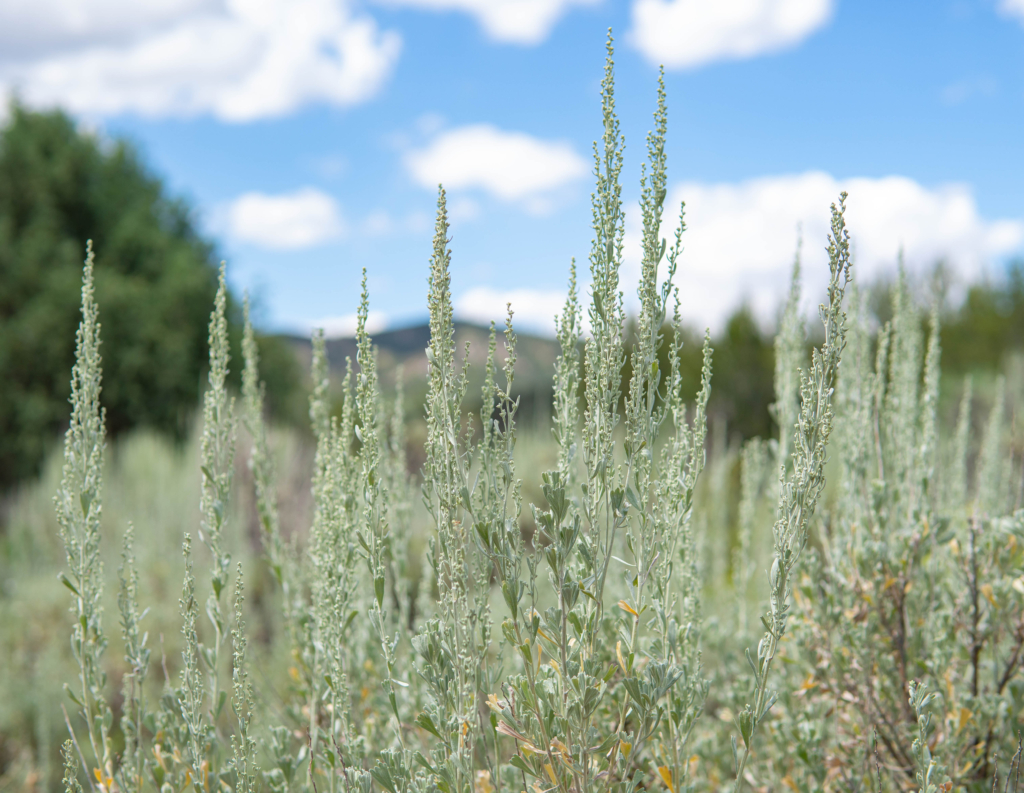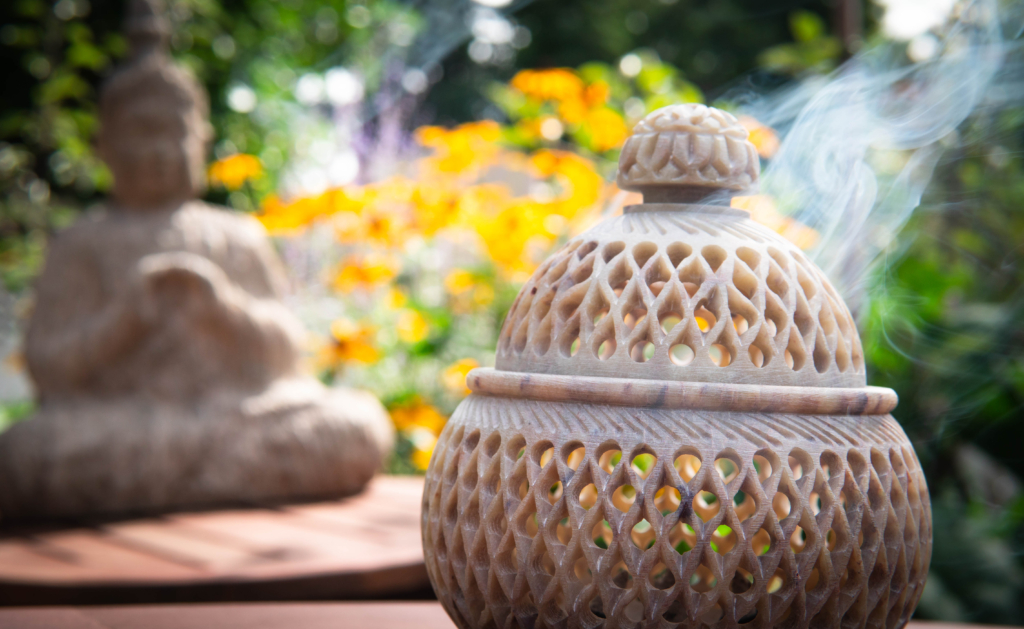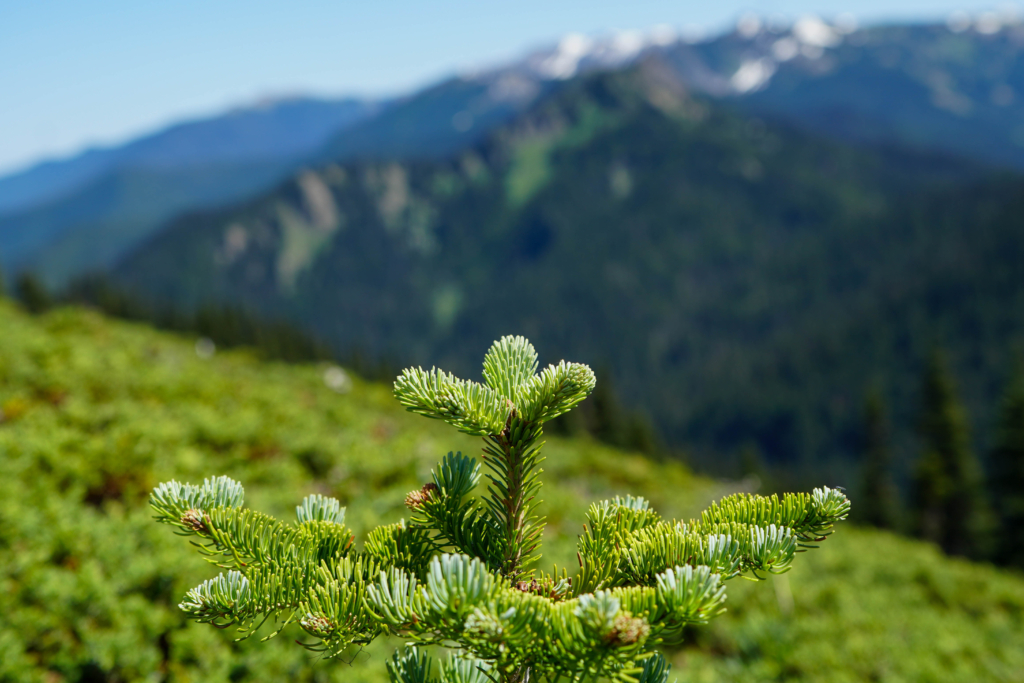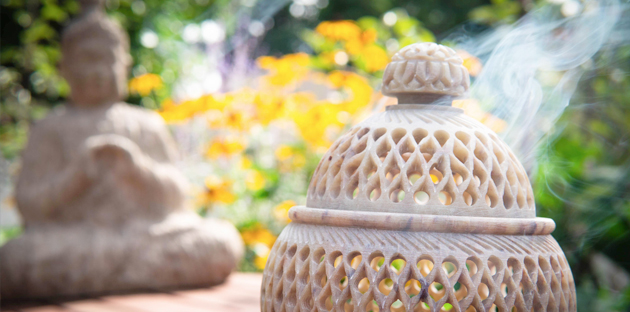The other night I had a super weird thing happen between my dream life and waking life that was the inspiration for this blog. In my dream I was smelling this super odd, incredibly intense and complex aroma that literally woke me up out of my dream! That’s a first. I guess it was so shocking to my dreamworld senses that it kicked me out into waking reality. And the smell wasn’t there when I woke up. If I could only remember what that dream was about before that happened…
The sense of smell is indeed our most spiritually connected sense. It’s direct link to our intuition, dreams, higher thoughts, emotions, and memory add to the mystery behind the act of smelling. In every culture, spiritual belief system, and religion, our sense of smell is always associated to the divine in some way, and is considered our exalted sense.
The Many Functions of Ritual Aromatics
There are many reasons that just about every religious and spiritual practice has incorporated aromatic plants in the forms of incense, anointing oils, and perfumes into rituals and sacred offerings since their beginning. For one, aroma helps unlock the doors to the divine for us, activating something inside of our consciousness that allows us to slip into certain states of mind, or states of feeling, which you’ve likely experienced on some level with an incense or aromatic plant. At the same time a plant’s aromatic constituents literally affect our moods and how we feel. Sometimes turning on our parasympathetic nervous system and literally relaxing us or mildly sedating us, adding to our sacred experiences.
Aroma also helps us step out of time and forget our everyday tasks and thoughts for a moment so we can have greater focus in a state of prayer, ritual, or intention. At the same time aroma also does something outside of us. Something equally mysterious. Since the beginning of time fragrance has been used to appease spirit, or spiritual entities, gods and goddesses, and deities. It’s universally used as a sacred offering, most commonly in the form of incense, as the smoke travels upwards to the heavens and grabs the attention of the spirit world.

Sagebrush, Artemisia tridentata, flourishing in Arizona.
In most Indigenous traditions and in Native American cultures, the smoke from certain sacred plants is thought to be the key to Creator’s heart, and burning plants in some form is seen in every ritual and prayer. In many Indigenous and shamanic cultures, and in some Asian cultures, floral and aromatic plant waters are used to bathe a person before beginning a ritual or ceremony to cleanse them energetically and spiritually, and give their bodies a beautiful smell that’s fit for the gods and spirits.
Aromatic plants and incense have always acted as a gateway or bridger of worlds, preparing us internally and our environment externally for sacred connection or communion, and also gaining the attention of divine beings and appeasing spirit.
Ancestral Aromatic Memory
Another layer to this is what I call Ancestral Aromatic Memory, where for thousands of years the same aromas have been used religiously or spiritually one generation after the next. When this happens I like to believe that the feelings or sacred thoughts that have been associated with a ritualistic aroma are somehow magically or spiritually, possibly genetically passed down through generations.
In this present day, with so many people straying away from their ancestral spiritual beliefs and practices, often for multiple generations, this could explain why when someone smells a sacred plant burned as incense for the first time they get an overwhelming feeling of something unexplainable and intangible, a profound feeling, a sense of something sacred.

I’ve witnessed this first-hand many times when people smell sacred plants like Palo Santo, Copal, Frankincense, Agarwood, Sandalwood or Cedar for the first time. It could even be that the aromas, energies, or life forces of these plants are embedded in the collective consciousness, and those ancient feelings are triggered within us when we smell them. Who’s really to say… But we all know that aroma has a direct connection to and plays an important role in our memories.
It’s certainly possible that the smell of certain aromatic plants that our ancestors used ritualistically or medicinally, or in their incense blends or other creations could be embedded in our psyche or our subconscious mind, in our energetic heart, or on the level of our spirit. But no one can ever know for sure why some people have a memory that they don’t recognize, or a profound or sacred feeling they’ve never felt before when they smell a plant for the first time. It’s something that will always remain a mystery.
Let’s go way back for a minute…
Unlock Your Free Issue Of...
🌿 The Aromatic Medicine Garden Membership 🌿
Are you ready for a deeper, holistic dive into the world of aromatic plants? See what our membership is all about with your free sneak peek issue, including an hour-long plant talk and a 21-page plant profile pdf full of recipes and insights.

Fragrance of a Creation Story
In the Creation story of Adam and Eve, out of our five senses, scent is the only sense not mentioned as having been involved in the primordial sin of eating the fruit from the Tree of Knowledge. In his book Mystical Aromatherapy, one of my teachers Avraham Sand says, “Eve ‘listened’ to the snake, ‘saw’ the good fruit, ‘touched’ it, and ‘tasted’ it. But there’s no mention of smelling the fruit..” Since the Garden of Eden is portrayed as having the most beautiful aromas in existence, the absence of aroma in this story speaks to its conspicuousness.
It’s also said that all of the senses of man, except the sense of smell, fell to a lower level of consciousness after Adam and Eve were cast out of the garden. From this part of the tale it’s been decided by the Rabbis that the sense of smell still holds its original purity and holiness; as it were in the Garden of Eden, and that aroma will always be an experience of the soul level.

Plumeria, Plumeria rubra, Kauai.
Why Certain Smells Trigger Sacred Experiences
Our sense of smell is the only one of our senses with a direct connection to the limbic system of the brain. All other senses are processed elsewhere before the information they gather is sent to the rational side of the brain as experience. The limbic system is the gateway to our intuition, memory, emotions, dreams, and higher consciousness. Since aroma is processed in this part of the brain, it has direct influence over these special aspects of our lives (which explains a little bit about the intense smelling dreams I had). This is why certain aromas can unlock higher thoughts and feelings that set the stage for phycho-spiritual experiences.
In the esoteric tradition of Western Alchemy, the soul of a plant has long been believed to be housed in its natural oils. These volatile essential oils of plants, referred to as “sulfur” by the Alchemists, which give them much of their strong fragrance and medicine, are considered to be the soul, or the unique consciousness of a plant. When applying this ancient philosophy to the experience of crafting and burning incense, smelling perfume, using an anointing oil, or even when we’re out in nature and smell a plant or flower on the breeze, we’re inhaling the soul essence of a plant. It’s also known cross-culturally that aromatic plants can heal us on the soul level, as well as our emotional bodies, psyches, and physical bodies in ways that most modern medicines can’t.

Spruce, Picea sitchensis, Olympic Mountains
Basically when we smell an aromatic plant in any way, we’re inviting its soul essence to affect our experience and heal us. This is why so many sages, mystics, and poets of old have considered scent to be an experience on the soul level. Which can explain why so many people go through personal transformations and deep healing when they use incense and essential oils. They put us directly in touch with the soul of a plant, through our sense of smell. Because of this connection, using aromatic plants and incense in a conscious or sacred manner can be one of our most profound tools for personal growth, transformation, and psycho-spiritual healing.
The Sacred Study of Aromatic Medicine
When you intentionally work with aromatics and incense, or start down the incense crafting path, with the determination to learn from the plants, heal with their help, and understand how they work in deeper ways through meditating with their aromas, and venturing deeper into the experience of scent, your work can open up in a profound way through practice and diligence.
In fact there are many aromatic practices from around the world that focus on learning the sacred teachings of aromatic plants and the secrets of healing through fragrance. One of the most profound being the Japanese practice of Listening to Incense, also known as The Way of Incense, or Koh-do, which is one of the most elaborate and profound aromatic practices there is.
The Koh-do and the incense ceremony at its heart is all about learning how to prepare yourself internally to meditate and commune with aroma, plants, and their spirits in a way that helps define your olfactory palette and intuition, and deepen your awareness of the subtle changes, energies and feelings that a plant can generate within you through its aromas. It’s certainly a practice that opens the heart and soul to a world of beauty and wonder.
To sum it all up, aroma and the sense of smell are most definitely under-appreciated in modern societies, and can be a powerful key to help people establish a sacred connection, or get in deeper touch with their spiritual nature and spirit. In older cultures, and in many spiritual and earth-centered traditions, aromatic plants and incense are an intrinsic part of everyday life and spiritual life that are honored and deeply studied. We can learn so much by following in the footsteps of the ancients and even learning to craft our own botanical creations as there is much wisdom, healing, and beauty waiting for all of us on the lifelong fragrant path.

Dive into the ancient world of aromatic plants with the Materia Aromatica ebook, an in-depth guide to the therapeutic, spiritual, and aesthetic uses of the world's favorite incense plants. This rare resource offers detailed plant profiles and explores how incense has been used across cultures for healing, ritual, and pleasure for ages.
Discover boundless botanical wisdom, delivered immediately to your inbox, for less than $10!
Article and video by Evan Sylliaasen

Evan Sylliaasen is the founder of the Northwest School of Aromatic Medicine and Higher Mind Incense. For the past decade his incense company has been a leader in sustainability and conscious sourcing of aromatic plants. As the head instructor of his online school, he teaches aromatherapists, incense lovers, herbalists, and spiritually-minded folks the traditional art of incense crafting, incense as medicine, and the art of wild-harvesting aromatic plants responsibly.
Evan lives with his family in the foothills of the Olympic Mountains of Washington state. He channels his creative passions through writing, photography, wood working, craftsman building, and music. When he’s not working, he’s out in the garden, forest and fields, walking along rivers, beaches, or in the mountains breathing deeply.
© 2021 The Northwest School of Aromatic Medicine. All rights reserved.
*The statements above have not been evaluated by the FDA. This article is not intended to diagnose, treat, cure, or prevent any disease. This article should not be taken as medical advice. Please consult your physician before you use this information for health purposes.
